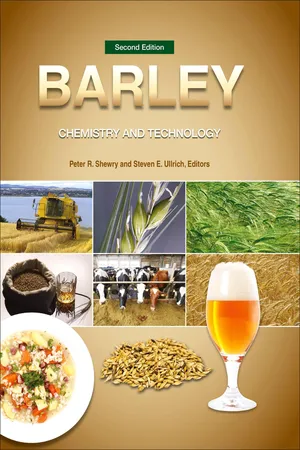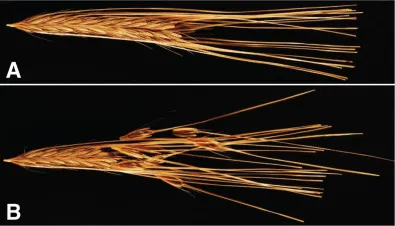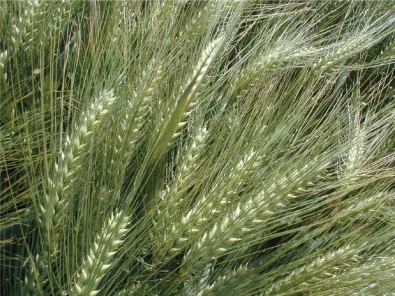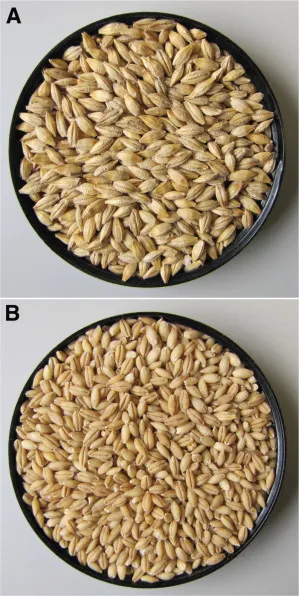
Barley
Chemistry and Technology, Second Edition
- English
- ePUB (mobile friendly)
- Available on iOS & Android
About this book
Barley: Chemistry and Technology, Second Edition is an important resource for any cereal chemist, food scientist, or crop scientist who needs to understand the development, structure, composition, and end-use properties of the barley grain for cultivation, trade, and utilization.Editors Peter R. Shewry and Steven E. Ullrich bring together a wide range of international authorities on barley to create this truly unique, encyclopedic reference work that covers the massive increase in barley knowledge over the past 20 years, since the first edition of this book was published. Barley: Chemistry and Technology, Second Edition offers the latest coverage of barley's applications in milling, breeding, and production for food, feed, malting, brewing, distilling, and biofuels. It delivers a complete update of the latest knowledge of barley's many components, from the genetic and molecular level to its many constituents, such as proteins, carbohydrates, arabinoxylans, minerals, lipids, terpenoids, phenolics, and vitamins.This important book also includes chapters on barley's plant and grain development from both the physiological and genetic perspectives, making it an important resource not only for cereal and food scientists but also for crop scientists involved in breeding, agronomy, and related plant sciencesNew coverage includes: - Updated, comprehensive knowledge on barley's components, including proteins, carbohydrates, arabinoxylans, and bioactive effects- New end-use ideas for barley as an ingredient in food products- Nonfood industrial applications for barley, including biofuels- A new chapter on barley's health benefits- Molecular breeding for malting quality
Frequently asked questions
- Essential is ideal for learners and professionals who enjoy exploring a wide range of subjects. Access the Essential Library with 800,000+ trusted titles and best-sellers across business, personal growth, and the humanities. Includes unlimited reading time and Standard Read Aloud voice.
- Complete: Perfect for advanced learners and researchers needing full, unrestricted access. Unlock 1.4M+ books across hundreds of subjects, including academic and specialized titles. The Complete Plan also includes advanced features like Premium Read Aloud and Research Assistant.
Please note we cannot support devices running on iOS 13 and Android 7 or earlier. Learn more about using the app.
Information
The Barley Crop: Origin and Taxonomy, Production, and End Uses
ORIGIN AND TAXONOMY OF BARLEY




Table of contents
- Cover image
- Title page
- Table of Contents
- Copyright
- Contributors
- Preface to the Second Edition
- Preface to the First Edition
- Chapter 1: The Barley Crop: Origin and Taxonomy, Production, and End Uses
- Chapter 2: Barley Grain: Development and Structure
- Chapter 3: Genetic and Molecular Aspects of Barley Grain Development
- Chapter 4: Barley Grain Carbohydrates: Starch and Cell Walls
- Chapter 5: Barley Arabinoxylans: Molecular, Physicochemical, and Functional Properties
- Chapter 6: Barley Grain Proteins
- Chapter 7: Minor Components of the Barley Grain: Minerals, Lipids, Terpenoids, Phenolics, and Vitamins
- Chapter 8: Malting, Brewing, and Distilling
- Chapter 9: Barley Foods and Public Health
- Chapter 10: Processing of Barley Grain for Food and Feed
- Chapter 11: Use of Barley Grain and Straw for Biofuels and Other Industrial Uses
- Chapter 12: Molecular Breeding for Malting Quality
- Index